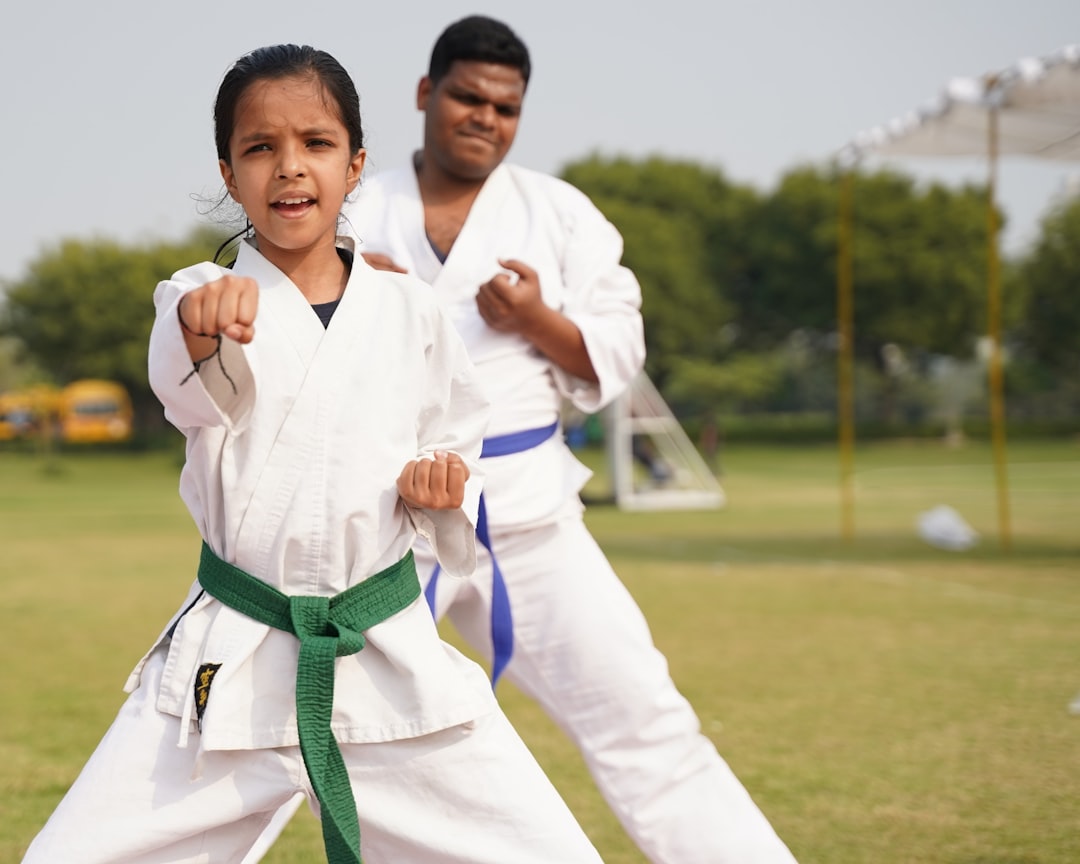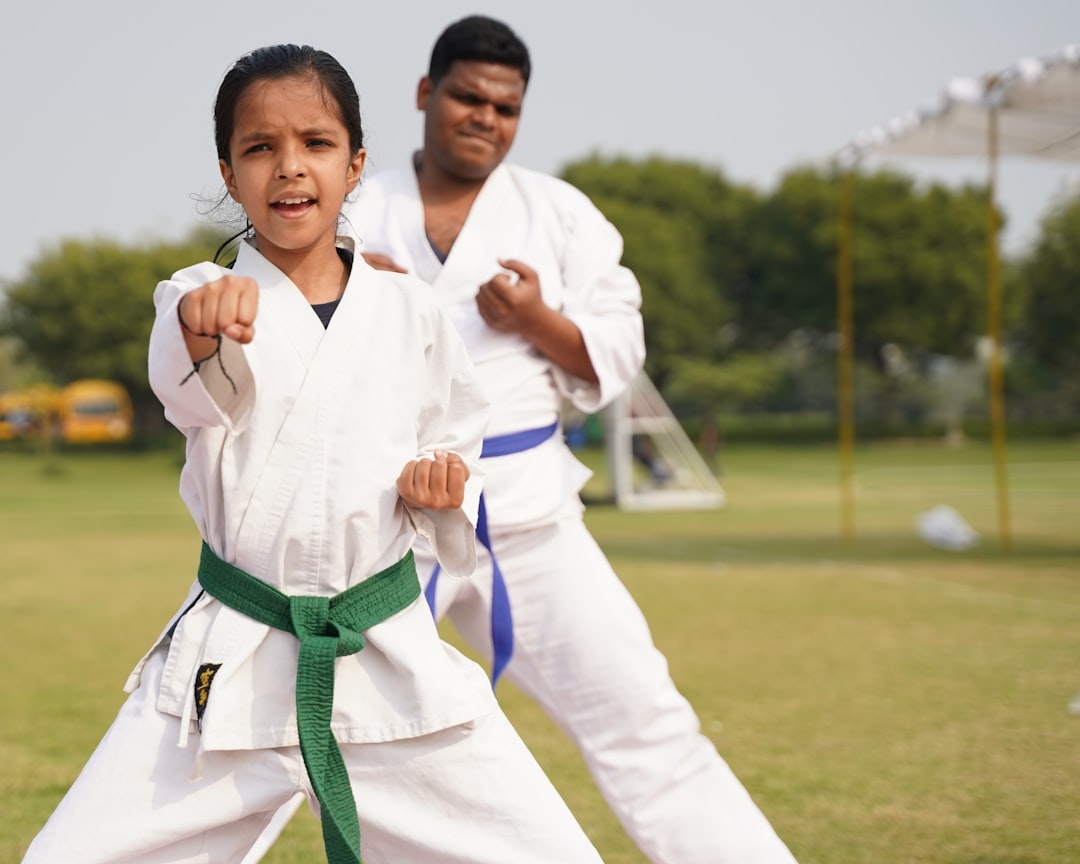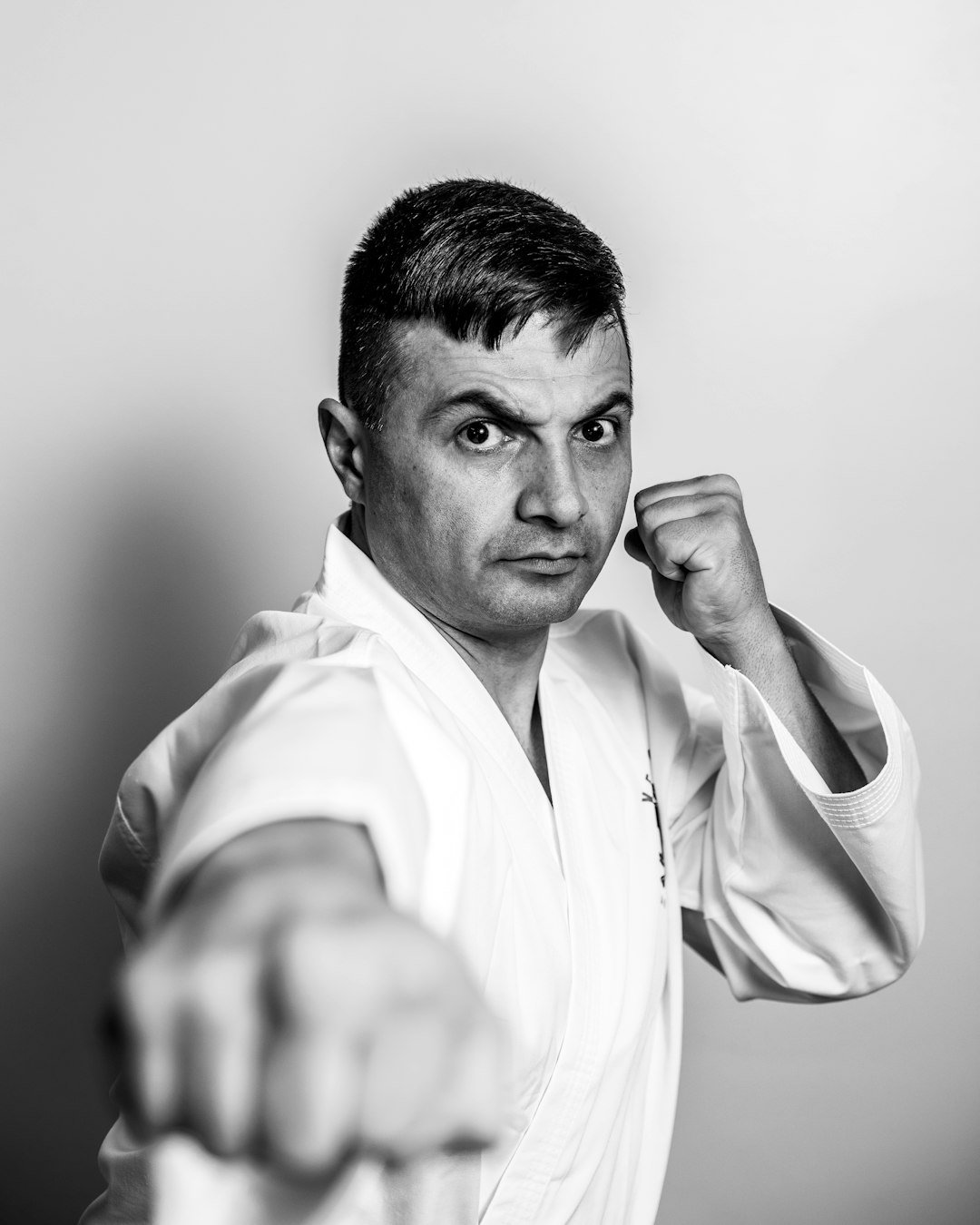TL;DR:
The modern karate uniform, or karate gi, has evolved from traditional Okinawa clothing, adapting to the specific demands of martial arts training. Initially made of simple cotton, it standardized in the 20th century with men's doburi and women's hakama, now often crafted from durable materials like cotton twill or synthetics. Today, the gi symbolizes discipline, modesty, and respect, with its design emphasizing movement and simplicity while varying in color and style across schools and skill levels.
The Evolution and Significance of the Karate Uniform
In the world of martial arts, the karate suit, often referred to as a gi, is more than just clothing; it holds deep historical and cultural value. This article explores the fascinating journey of the karate uniform, from its ancient roots to modern adaptations. We delve into the traditional materials, cultural influences, and symbolic meaning behind this iconic attire. Learn about the essential components of a standard karate suit (Gi) and discover how it has evolved while retaining its significance in karate’s global community.
- The Historical Origin of the Karate Uniform
- – Brief history of karate and its uniform evolution.
- – Traditional materials used in early karate uniforms.
- – Cultural influences on karate attire.
The Historical Origin of the Karate Uniform

The karate uniform, often referred to as a karate gi or karate suit, has evolved significantly since its early beginnings in Okinawa, Japan. Its historical origin traces back to the traditional clothing of the Ryukyu Kingdom, which was distinct from that of mainland Japan due to cultural and geographical influences. The early forms of what we now know as the karate uniform were simple cotton cloth kimonos, modified for practical use in martial arts training.
These traditional Okinawan garments, called Uchi-no-shozai, consisted of lightweight, flexible clothing designed to allow a full range of motion. Over time, these kimonos took on specific characteristics tailored for karate practice. The garment’s construction incorporated reinforced seams and sturdy fabric to withstand the rigors of training, while the design itself accommodated the precise movements and strikes inherent to karate techniques.
– Brief history of karate and its uniform evolution.

Karate, an ancient martial art with roots in Okinawa, Japan, has evolved significantly over the centuries, both in terms of its practices and its iconic uniform, often referred to as a karate suit. The early forms of karate were developed by the Ryukyuans, who incorporated elements from various Chinese martial arts, including Kung Fu. During this time, practitioners wore simple cotton or linen clothing that allowed for ease of movement—a far cry from the specialized gear we associate with modern karate today.
As karate gained popularity worldwide in the 20th century, so too did the standardization of its uniform. The traditional karate suit, known as a doburi (for men) or hakama (for women), became the norm. These garments are designed to restrict movement in specific ways, challenging practitioners to refine their technique and body control. The doburi is a tightly fitted pant with a drawstring waist, while the hakama features pleats that allow for greater range of motion during complex kicks and stances. Today, karate uniforms come in various colors, styles, and materials, each catering to different schools (ryu) and levels of practice within this diverse martial art.
– Traditional materials used in early karate uniforms.

In the early days of karate, the uniform or gear worn by practitioners was quite different from what we recognize today. Historically, martial artists in Okinawa, where karate originated, would train and compete wearing simple cotton clothing tailored to their specific art. These garments were often loose-fitting and easy to move in, allowing for unrestricted movement during rigorous training sessions. The traditional material of choice was usually lightweight, breathable fabrics such as cotton or linen, ensuring comfort and practicality during intense physical activity.
The term ‘karate suit’ is a modern interpretation of the attire worn by these early practitioners. It evolved over time as karate gained popularity and standardized across different schools and styles. Today, the uniform, typically made from durable and flexible materials like cotton twill or synthetic blends, serves not only to protect the wearer but also to symbolize their dedication and commitment to the martial art they practice.
– Cultural influences on karate attire.

The traditional karate uniform, often referred to as a karate suit or gi (着物 in Japanese), is more than just clothing; it embodies the cultural and philosophical values of this martial art. Its design and construction are deeply rooted in Japanese culture and tradition, reflecting discipline, modesty, and respect. The gi is typically made of lightweight cotton, allowing for ease of movement during intense training sessions.
Cultural influences on karate attire are evident in the simple yet elegant design of the gi. The uniform consists of a jacket (keikogi) and pants (chima or hakama), both tied with a belt (obi). The colors and patterns can vary, but traditional shades of white, blue, or black are common. These attire elements encourage practitioners to focus on the art itself rather than flashy displays, promoting humility and a deep connection to karate’s spiritual aspects.
In conclusion, the karate suit, or more formally known as the karate gi, has evolved significantly since its early days, reflecting changes in martial arts practice and cultural influences. From its humble beginnings with simple, durable fabrics, the karate uniform has become a symbol of discipline and tradition. Today, while modern materials offer enhanced performance, the core design principles pay homage to the rich history of karate, making it unique among martial arts attire. Understanding this evolution provides insight into the deeper cultural and philosophical aspects of this ancient practice.
